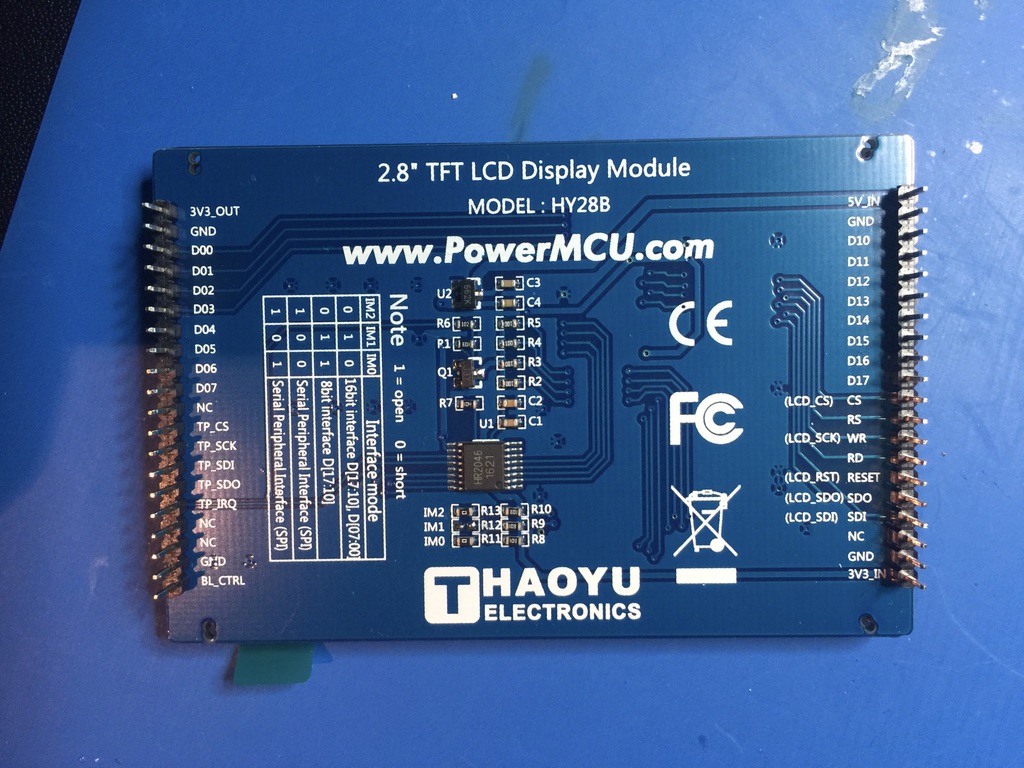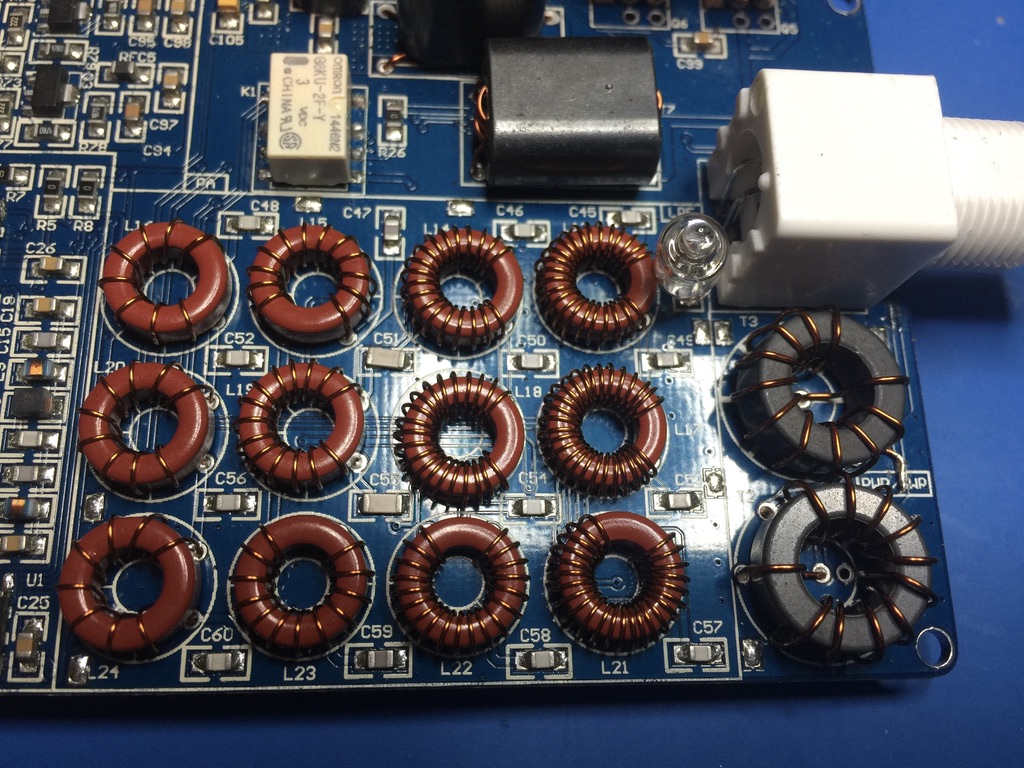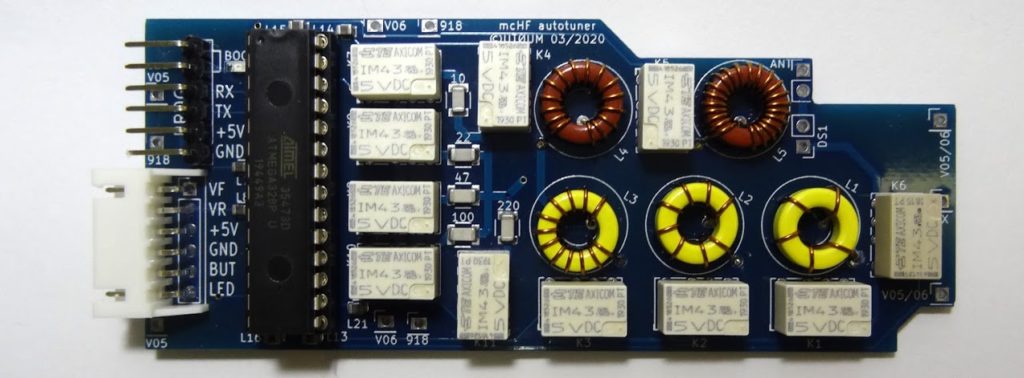Article by LB5ZH, Geir Inge.

The mcHF-QRP is a capable HF transceiver created by Chris, M0NKA. He set out to design an inexpensive and small SDR HF home-brew radio back in 2013. Over time the hardware has gone through several iterations, always improving by the group effort of the HAM radio community. Initially the software on the radio was also built by Chris, but currently most people run the open source UHSDR software. Today several clones do exist and you can buy it fully built by Chinese manufacturers, although we do recommend to buy the sets with full support from the original designer.
Within LA3T several members have built their own radios, most of them based on the revision 0.4 or 0.5 PCB. The radio has proven to be extremely capable with new features popping up with every new release of the software. The radio is a typical SDR with built-in bandpass filters and excellent I/Q. No external PC is necessary and the radio is fully functional as is. Being small with 5-10W output gives you a fully functional radio that is exceptionally portable.
The build

Back in 2018 I set out to build my own home-brewed amateur radio, which would be my biggest soldering project to date. I ordered the parts from M0NKA, with most of the electronics in the BOM as a kit. The RD-16HHF1 MOSFETs were not included and was ordered fully matched from a Russian HAM operator. Today you will get these MOSFET´s as part of the kit from M0NKA. I did order the kit where most of the SMD were factory soldered, but you still have to solder all through-hole and many more SMD components.
Several build instructions are available and the project is not difficult if you have some soldering experience (it should not be your first solder project). However, do read all the instructions before soldering it all together, as there are most likely some modifications you have to do. Especially, if you like me, solder the screen to the PCB you have to make sure that all modifications that needs to be done under the screen has been performed. For instance, this is needed if you want the touchscreen to be operational with touch input.




The RF board requires that you wind your own inductors for the band-pass filters. Do take care to align the windings evenly around the core.
Also, do take care to solder the MOSFET´s at the correct height to be able to mount them properly to the heatsink of the case. I mounted them in the case before soldering them to the RF board, just to make sure they all were aligned properly.


As soon as the UI board were finished I had to go through an initial software setup of the CPU and store the boot-loader and firmware on the CPU. I also added an optional I2C EEPROM to my board to keep the last configuration of the radio when powering down without wearing out the flash in the mcu. It is somewhat tricky the first initialisation of the CPU, but with the correct boot-loader in place any further updates to the software is as simple as connecting the USB drive with the firmware image to the radio.


For the case many like to 3D print their own but I do feel that does not give the radio the look and feel it deserves. In addition, you will get problems with the heat without a proper heatsink attached to the MOSFET´s. A Chinese manufacturer creates beautiful aluminium cases that fit perfectly to the radio. The kit comes with the rotary encoders as well, so please order the kit before soldering the boards. For the buttons I 3D printed them in three different colors. The end result was a good performing HF radio which I always carry with me on vacations and trips to the cabin. Today you can even order this case directly from M0NKA.



Further enhancements are still possible, although the hardware revision for this form factor ended with v0.6 of the PCB. These modifications are added to my build, but as v0.7 changed the form factor together with a new design no further improvements are expected to the PCB´s itself.

However, one huge improvement would be to integrate an autotuner, eliminating the need to carry one with you. I use the excellent Elecraft T1, but it still is an additional device I have to remember to bring with me. Alexey, UT0UM, has designed an internal automatic antenna tuner especially for the mcHF. It is so small that it will still fit inside the Chinese case. That is truly an amazing upgrade to an already excellent radio. I may have to order one 🙂
I’we buy last 6.3 kit, i’m long time experienced in soldering, but instead this my kit started wey bad. Wery low power at 28 and 7 mhz (few mw at 28)
Now after alot of work 2w in 28, but i never seen 10w at max power and power selector did nit work. I’we turned and returned many times toroids, changed finals withd paired two and also pre finals. Founding failed soldering in piloting ma. IC and in rf preamplifier. At last changed software with an actual, all this gave me a not complitely working rtx, receiving side is perfect but not TX. My bests regards de iw1chx Nic.
Have you got genuine PA transistors
Ich suche eine mcHF RF 0.4 Platine
Suche von mchf 0.4 noch eine Platiene
Die Hintere blank mit oder ohne
Teile